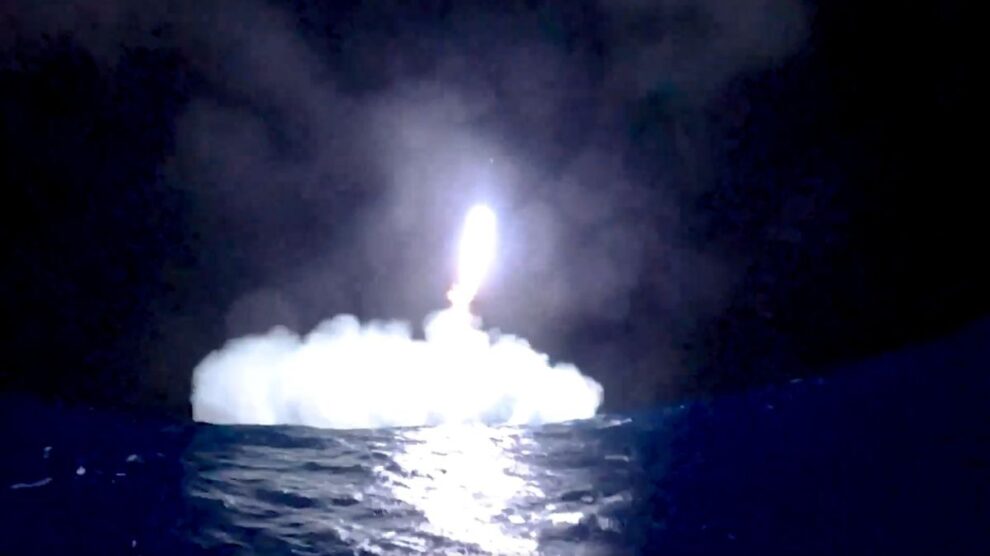SpaceX has once again pushed the boundaries of space exploration with its fifth test flight of the Starship megarocket. The mission, which took place on October 13, 2024, marked several historic achievements, including the first successful catch of the Super Heavy booster and a controlled splashdown of the Starship upper stage. Now, with the release of new footage showing the Starship’s descent and splashdown, we have an even clearer picture of the remarkable progress being made in reusable rocket technology.

Key Achievements of the Fifth Test Flight
Super Heavy Booster Catch
- Historic First: Successful catch of the Super Heavy booster by the launch tower’s “chopstick” arms
- Timing: Catch occurred approximately seven minutes after liftoff
- Significance: Demonstrates potential for rapid reusability of the first stage
Starship Upper Stage Splashdown
- Location: Targeted area in the Indian Ocean
- Distance: Approximately halfway around the world from the South Texas launch site
- Precision: Achieved a pinpoint splashdown at the designated location
Analysis of the New Footage
Video Details
- Duration: 21 seconds
- Perspective: Captured from the ocean’s surface, likely from a buoy or floating object
- Content: Shows Starship’s flip maneuver and landing burn
Key Observations
- Controlled Entry: The footage demonstrates a stable and controlled descent of the Starship upper stage
- Flip Maneuver: Clear visualization of the vehicle’s orientation change for landing
- Landing Burn: Visible ignition and sustained burn of engines during final descent
- Flap Protection: SpaceX noted that vehicle improvements ensured flaps were protected from high heating during re-entry
Technical Advancements
Heat Shield Improvements
The successful protection of the flaps during re-entry indicates significant progress in Starship’s thermal protection system:
- Material Science: Likely advancements in heat-resistant materials
- Design Optimization: Refined aerodynamic design to manage heat distribution
- Testing Validation: Confirms the effectiveness of improvements made based on previous test flights
Navigation and Control Systems
The precision of the splashdown demonstrates advancements in Starship’s guidance systems:
- Software Refinement: Improved algorithms for trajectory calculation and control
- Sensor Integration: Enhanced use of onboard sensors for real-time adjustments
- Atmospheric Modeling: Better prediction and compensation for atmospheric conditions during descent
Implications for Future Missions
Rapid Reusability
The successful catch of the Super Heavy booster has significant implications:
- Turnaround Time: Potential for dramatically reduced time between launches
- Cost Reduction: Lower refurbishment costs compared to water landings
- Increased Launch Frequency: Ability to support more frequent missions with the same hardware
Payload Capacity and Mission Flexibility
Starship’s successful flight and controlled descent open new possibilities:
- Increased Payload to Orbit: Improved efficiency could allow for larger payloads
- Diverse Mission Profiles: Capability to support various mission types, from LEO satellites to deep space exploration
- In-Space Refueling: Potential for on-orbit refueling to extend mission capabilities
Comparison with Previous Test Flights
| Test Flight | Date | Key Achievements | Challenges |
|---|---|---|---|
| 1st | April 20, 2023 | First integrated flight attempt | Exploded shortly after liftoff |
| 2nd | November 18, 2023 | Reached space, completed stage separation | Both stages lost during return |
| 3rd | March 14, 2024 | Successful stage separation, upper stage reached target altitude | Upper stage lost during re-entry |
| 4th | July 6, 2024 | Both stages survived re-entry, water landings achieved | Booster catch attempt unsuccessful |
| 5th | October 13, 2024 | Successful booster catch, controlled upper stage splashdown | None reported |
Industry Impact and Competition
Commercial Space Industry
- Launch Costs: Potential for significant reduction in per-kilogram launch costs
- New Markets: Enabling new business models in space tourism, manufacturing, and resource utilization
- Investment Attraction: Success likely to drive increased investment in commercial space ventures
Competition Response
SpaceX’s achievements may spur increased activity from competitors:
- Blue Origin: Potential acceleration of New Glenn development
- ULA: Pressure to innovate and reduce costs of traditional launch systems
- International Players: Increased efforts from entities like Roscosmos, ISRO, and private Chinese companies
Environmental Considerations
Positive Impacts
- Reusability: Reduced manufacturing and less space debris from expended stages
- Efficiency: Potential for lower emissions per kilogram of payload delivered to orbit
Concerns and Mitigations
- Launch Frequency: Increased launches may have localized environmental impacts
- Upper Atmosphere Effects: Need for ongoing study of rocket emissions on upper atmosphere
- Ocean Impact: Consideration of effects of frequent splashdowns on marine ecosystems
Future Outlook
Near-Term Goals
- Orbital Refueling: Development and testing of in-space refueling capabilities
- Human Rating: Preparations for eventual crewed flights
- Rapid Reuse Demonstration: Aiming for quick turnaround times between flights
Long-Term Vision
- Mars Missions: Continued development towards SpaceX’s goal of Mars colonization
- Lunar Operations: Potential use in NASA’s Artemis program and commercial lunar missions
- Point-to-Point Earth Travel: Development of Earth-based transportation using suborbital flights
Conclusion
SpaceX’s fifth test flight of Starship represents a watershed moment in the history of spaceflight. The successful catch of the Super Heavy booster and the controlled splashdown of the Starship upper stage demonstrate significant progress towards fully reusable heavy-lift launch capabilities. These achievements, now further illuminated by the newly released footage, showcase the rapid pace of innovation in the commercial space sector.
The implications of this success extend far beyond SpaceX itself. It potentially heralds a new era in space exploration and utilization, where the cost and complexity of accessing space are dramatically reduced. This could accelerate various space-based initiatives, from scientific research and telecommunications to space tourism and interplanetary exploration.
However, as with any major technological advancement, there are challenges to be addressed. Environmental considerations, regulatory frameworks, and the broader economic impacts of such capabilities will need careful consideration and management.
As SpaceX continues to refine and expand the capabilities of Starship, the coming years promise to be an exciting time for space enthusiasts and industry observers alike. The success of this test flight brings us one step closer to a future where regular, reliable access to space becomes a reality, opening up new frontiers for human exploration and innovation.










Add Comment